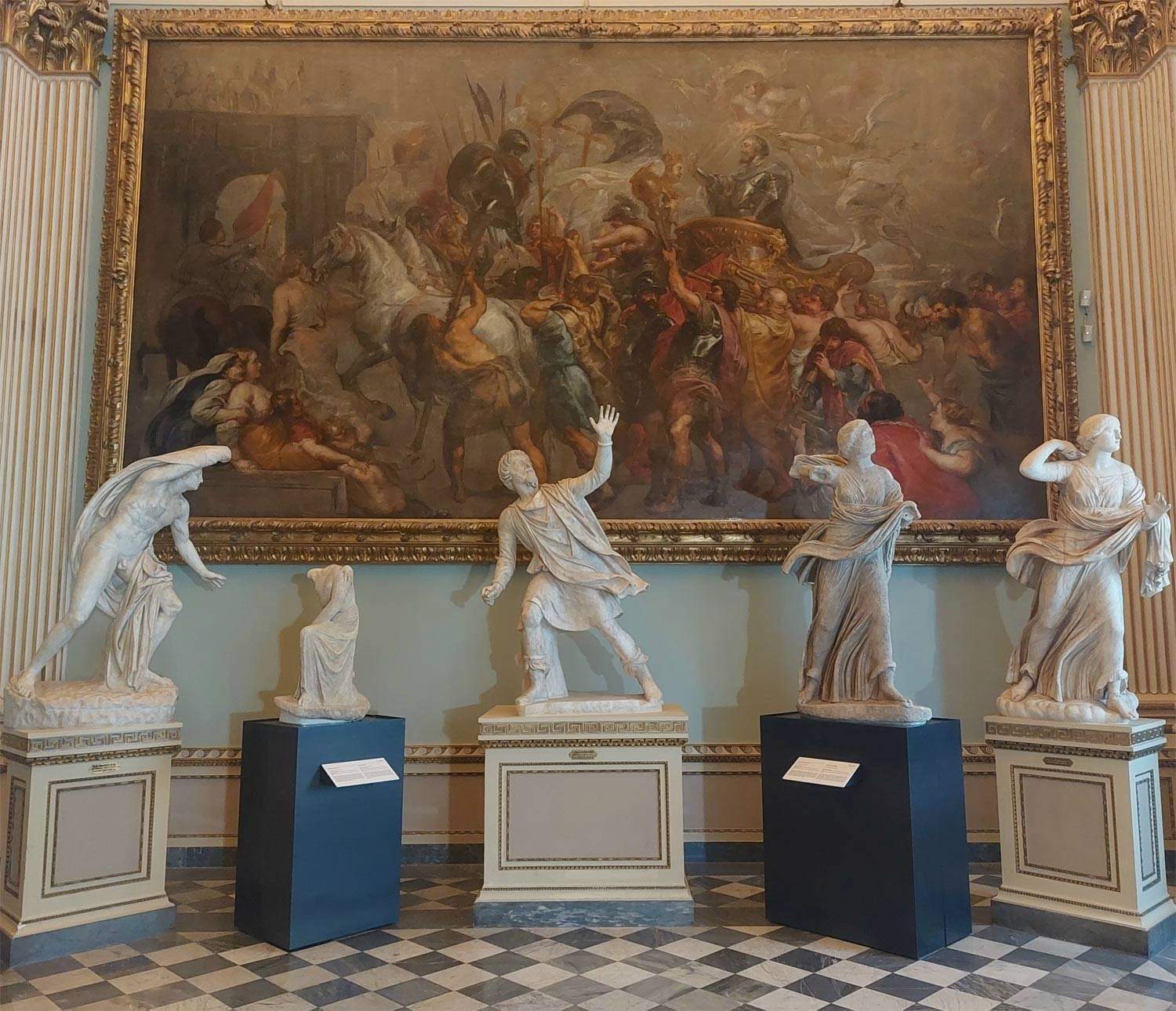From Nov. 14 through March 12, 2023, the Uffizi Gallery in Florence is dedicating an exhibition to the myth of Niobe by displaying, alongside the thirteen famous statues of Niobe, belonging to the museum’s collection, another sculptural group recently discovered in the thermal sector of an ancient Roman villa. The two main sculptural groups dedicated to the Niobe myth are exhibited together for the first time in the Uffizi.
The Uffizi’s thirteen statues depict the slaying of the children of Niobe, the tragic protagonist of the mythological tale: the mother of seven sons and seven daughters, she had boasted about her fecundity, comparing herself to the goddess Latona, mother of Apollo and Artemis, and believing she was due divine honors. For her pride, she was punished by Apollo, who killed her sons, and Artemis, who instead exterminated her daughters. The myth is represented by the thirteen famous Roman-era statues now housed in the hall of the same name in the Gallery: for the exhibition, nine more are joined by a sculptural group recently discovered at Ciampino.
The thirteen statues in the Uffizi were found in early 1583 within the Aurelian walls, in the vineyard of Gabriele and Tomaso Tommasini, and then transferred to Florence only in 1770. Now the Florentine Niobids will be confronted by the other sculptural group, currently preserved in the Shrine of Hercules the Victor in Tivoli, an architectural complex part of the Villa Adriana and Villa d’Este Institute. The nine sculptures were found in 2012 in a large pool near the thermal sector of an ancient villa on the outskirts of Rome, partly fragmentary, but once again recomposing the myth of Niobe.
It is possible to learn more about the subject on the Uffizi website: starting today, in fact, a virtual exhibition dedicated to the two marble groups can be visited at uffizi.it.
During the exhibition, there will also be tours with tactile exploration on some of the sculptures in the Sala della Niobe. They are open to all, but aimed at small groups (maximum 5 people): to participate, one must make reservations by writing to uffiziaccessibili@cultura.gov.it and be in possession of the entrance ticket. They will be held on Nov. 22, Dec. 6, Jan. 10 and 24, and Feb. 7 and 21, starting at 10 a.m.
“he group of Florentine Niobid statues has been one of the main interests of the protagonists of the Grand Tour for centuries,” says Eike Schmidt, director of the Uffizi. “The direct comparison between the sculptures recently discovered at Ciampino and those of the Medici will enable a better appreciation of their affinities and discontinuities, while at the same time allowing more light to be shed on the prototypes on which they depend. The Hall of Niobe, now more than ever, deserves its name, housing a crowd of sculptures that narrate the cruelty of the gods and the foolishness of men.”
“The two groups, from the Uffizi and Tivoli,” points out Andrea Bruciati, director of the Villa Adriana and Villa d’Este Autonomous Institute in Tivoli, “can be interpreted as tableau vivant, a kind of solidified performance within which the narrative is structured in a cinematic manner. They therefore rise to expressive models of the same matrix. In this sense, the Sanctuary group substantially complements that of the Uffizi. The politeness and perfection of the latter are an index and manifestation of a Kantian thought of distance and mastery of reason over emotion, where control is the only weapon at hand. In the Tivoli complex, on the other hand, the physical corruption of matter seems to suggest a description more attentive to the primal, almost Jungian and chthonic force, an existential and porous residue of an apocalyptic tragedy.”
 |
| Comparison of two groups of Niobids on display at the Uffizi |
Warning: the translation into English of the original Italian article was created using automatic tools. We undertake to review all articles, but we do not guarantee the total absence of inaccuracies in the translation due to the program. You can find the original by clicking on the ITA button. If you find any mistake,please contact us.